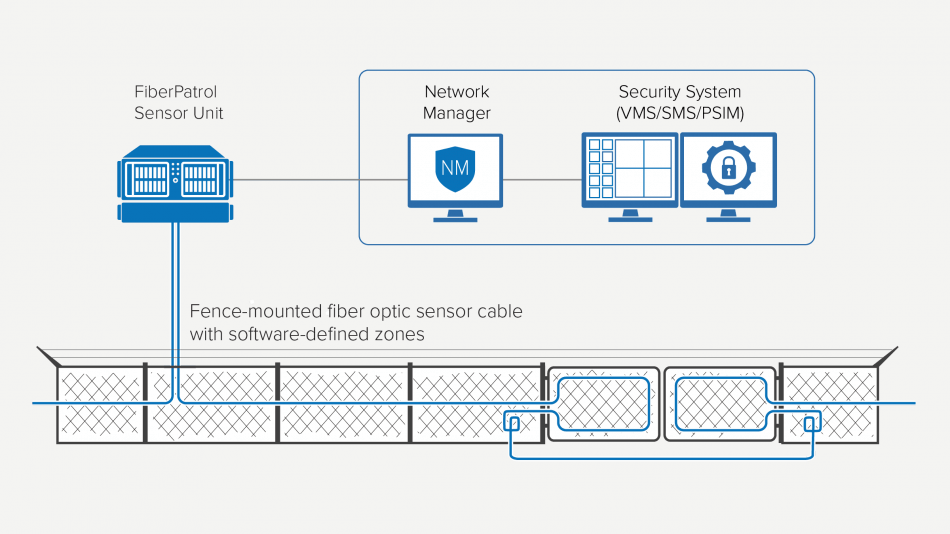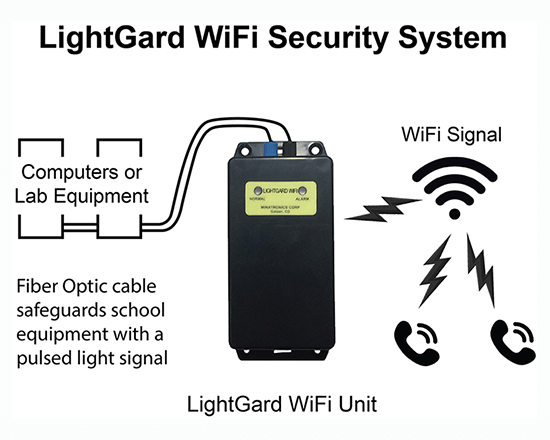The Evolution of Fiber Security System in Modern Security Installations
Wiki Article
Boost Your Safety And Security With Advanced Fiber Optic Safety And Security Equipments
In an era where protection is extremely important, advanced fiber optic safety and security systems present an engaging solution for enhancing safety and security across numerous settings. What effects do these improvements hold for future safety procedures?Benefits of Fiber Optic Security
Utilizing the benefits of fiber optic innovation dramatically enhances security systems throughout various applications. Among the main advantages is the increased data transfer ability, allowing for the transmission of large amounts of data at high speeds. This is specifically crucial for real-time video monitoring, where high-resolution feeds can be sent out without latency, making sure immediate reaction abilities.In addition, optical fiber display superior resistance to electromagnetic interference, which is crucial in atmospheres with potential signal disruptions. This dependability ensures constant performance in critical safety and security operations. Furthermore, fiber optic cords are much less susceptible to touching and unapproved gain access to compared to conventional copper wiring, consequently boosting information stability and privacy.
Another notable benefit is the durability of fiber optic systems; they are more immune to environmental elements such as dampness, temperature fluctuations, and harsh compounds. This durability converts to decrease upkeep prices and longer life-spans for safety and security installments.
Last but not least, the lightweight nature of fiber optic cables promotes much easier installment and transmitting, especially in intricate facilities (fiber optic security system). Ultimately, the integration of fiber optic innovation right into safety systems not just bolsters security actions yet additionally optimizes operational efficiency
Key Functions to Take Into Consideration
When evaluating fiber optic security systems, several key features must be considered to ensure optimum efficiency and efficiency. First, evaluate the system's detection variety and sensitivity; an extensive variety allows for keeping an eye on big areas, while high sensitivity ensures that even small disruptions are identified without delay.Following, think about the assimilation abilities of the system. A fiber optic safety system should seamlessly user interface with existing safety and security actions such as cams and alarms, developing a cohesive protection network.
Longevity and ecological resistance are also essential functions. Ensure that the system is created to withstand rough weather and possible physical risks, as this will certainly prolong its functional lifespan.

Last but not least, check into the scalability of the system. A robust fiber optic security system need to be quickly expandable to suit future requirements without significant overhauls. By meticulously taking into consideration these functions, you can choose a fiber optic protection remedy that boosts security and safety in your atmosphere.
Setup Refine Summary
To efficiently apply a fiber optic safety and security system, a systematic installation procedure is essential. This procedure starts with an extensive website evaluation to determine the specific safety needs and to recognize optimum places for fiber optic wires and safety gadgets. Following this assessment, the installation group will certainly develop a detailed strategy, including cable paths, needed tools, and compliance with neighborhood laws.Next, the setup entails laying the fiber optic cable televisions, ensuring they are safeguarded from environmental aspects and physical damage. Proper handling techniques are important, as fiber optic cords are delicate and can be quickly harmed. After the cabling is mounted, adapters and discontinuations are meticulously completed to ensure signal integrity.
The subsequent stage includes setting up safety and security devices such as electronic cameras, activity detectors, and security system, all incorporated with the fiber optic network. Extensive testing is performed to confirm that all components are operating properly and to guarantee optimum efficiency.

Contrasting Fiber Optic to Conventional Equipments
The advancement of safety and security technology has brought about considerable developments in the contrast in between fiber optic systems and conventional copper-based systems. Fiber optic systems make use of light to transfer data, providing exceptional data transfer and speed contrasted to their copper counterparts. This results in enhanced data transmission capabilities, making optical fiber optimal for high-resolution video monitoring and real-time monitoring.Furthermore, fiber optic cable televisions are immune to electromagnetic interference, minimizing the possibility of signal destruction triggered by external aspects. This characteristic makes certain consistent performance, even in tough environments. In comparison, conventional copper systems are extra vulnerable to disturbance, resulting in possible vulnerabilities in protection applications.
Sturdiness is an additional advantage of fiber optic systems. They are much less vulnerable to damage from environmental variables such as moisture and temperature level variations, which can compromise copper circuitry. Fiber optics are fiber security lighter and thinner, allowing for simpler installment and reduced physical footprint.
Nevertheless, standard systems often tend to have lower initial expenses, making them eye-catching for budget-conscious tasks. While fiber optic systems may call for a greater upfront investment, their long-lasting benefits-- such as lower upkeep expenses and better integrity-- often outweigh the initial expense, positioning them as a remarkable option for modern-day protection demands.
Future Fads in Protection Modern Technology
Arising fads in protection technology are poised to transform the landscape of surveillance and threat discovery - fiber optic security system. As companies significantly encounter innovative hazards, technologies such as fabricated knowledge (AI) and artificial intelligence (ML) are ending up being important to safety and security systems. These technologies enhance the capacity of fiber optic systems by making it possible for real-time information analysis, identifying abnormalities, and automating feedbacks to prospective breachesAdditionally, the assimilation of the Web of Things (IoT) is revolutionizing protection structures. IoT gadgets can provide thorough situational understanding and help with seamless interaction between various safety components. This interconnectedness permits for a lot more efficient surveillance and faster occurrence response times.
Biometric verification is likewise acquiring momentum, providing a greater degree of safety through one-of-a-kind physical features. As this modern technology develops, it is most likely to be included into fiber optic systems for boosted gain access to control.
Conclusion
To conclude, advanced fiber optic protection systems represent a considerable advancement in security and surveillance innovation. Their superior data transfer, resistance to disturbance, and sturdiness promote reputable surveillance and data stability. As these systems incorporate AI and IoT capabilities, they improve the total security framework, making certain robust security for possessions. The change from traditional systems to fiber optic options mirrors an expanding trend towards a lot more reliable and effective safety and security steps in an increasingly complex technological landscape.Report this wiki page